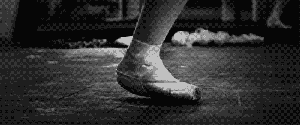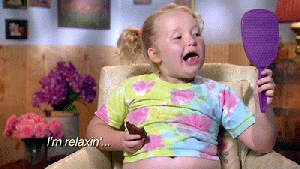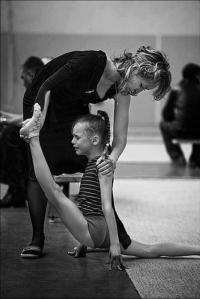Tombe pas de bouree glissade sout de chat. To some of you these words may sound like a foreign language or a bunch of jibberish, but to ballerinas these words are no more than a simple 8-count combination that will move them across the floor.
Don’t let the elegant language of ballet, the sparkly pink tutus, or the delicate ballerinas fool you – dance is brutal. But, What is dance? It is defined as ‘moving rhythmically to music, typically following a set sequence of steps.’ And its generally considered a performing art, but what does that make a dancer? Are we artists… a painter might disagree. Are we athletes? A football player may not agree either.
I believe, or I know rather, that we are both. Because just as a painter expresses their emotions onto the canvas, I do onto the stage. Just as the football player fights through the practices to get a win against the opposing team, I fight through rehearsals to get a win against myself, pushing my body to higher limits everyday. Why are some people so quick to judge and claim that we are not athletes and dance is not our sport?
Dance is one of those things that is underestimated and often overlooked, but as a dance major I can guarantee that dance isn’t all about tutus and pirouettes. To be a dancer takes a lot of determination and training, sacrifice and perseverance, and often dealing with controversies and stereotypes.
Nearly every little girl wants to be a ballerina princess; it’s the perfect job isn’t it? You get to wear all pink, douse yourself in glitter, and even put on real makeup when you go on stage. However, not all of these young princesses will go on to be a dancer for the rest of their lives – it isn’t for everybody. After the age of 4 or 5, the real world of ballet begins so that the child can become a well developed and mature dancer. For instance, I began my ballet training at the age of 3 by taking pre-ballet where I learned how to control my body to the rhythm of the music, but when I was just 6 years old I began taking more constructed twice a week – and I was no longer getting instructions like walk on your tippy toes or do a ballerina turn. My teacher instructed us to walk on releve and perform soutenus because studies suggest that young minds are more adept to learning new languages and ballet is definitely a language.
In an issue of Dance Magazine the question was brought up: Is there an Ideal age for starting ballet? Damara Bennett, director of the School of Oregon Ballet Theatre, states that they begin pre-ballet at age 4 and full ballet training around the age of 6 because starting early has the advantage of cultivating long lines and strong technique. A New York City Principal dancer states that the younger the better because “Ballet involves a lot of small muscles in addition to major muscle groups, and it can take years to learn them.” Bennett claims that it takes 12 years to train a dancer before they are company ready, which means that in order to have a professional career in dance, more training should be done than nearly any other sport or art form.
Deciding to make dance a lifelong career definitely has its ups and downs. Generally you choose dance as a career because it is your passion and something you have always known but with that comes little pay, harsh criticism, and injuries. According to an article in Examiner magazine, the average salary of professional ballerina was roughly 59,000 a year. Although, that was the average so if the dancer is an Apprentice or entry-level company member they can receive as low as 22,000 depending on company of hire and location. Big name companies such as New York City Ballet and American Ballet Theatre are going to be able to pay their dancers much more. For instance, in 2005 principal dancer Julie Kent of American Ballet Theatre receives 171,000 a year according to NY magazines Salary Guide; however reaching that level at such a large company has lesser probabilities than a smaller company, but not every dancer will go on to be a professional.Your child may wish to be a teacher, choreographer, artistic director, or even a higher ed teacher… however it is highly likely that at some point your child may get injured.
As I am going on my 17th year of dance I have suffered from multiple stress fractures, bone contusions, sprains, shin splints, fractures, pulled muscles, a sesamoidectomy…in fact it got to the point where I had a set of crutches and a boot in my closet back home that were used at least once a dance season.
This is because, dance is a very taxing activity or sport and rehearsing for up to 10 hours a day sometimes parts of the body…especially the feet are bound to take a beating. According to a research article on bone stress injury in professional ballet dancers, a reported nine of eleven claimed to experience mild ankle pain during activity; 5 of which reported some pain at rest. Another study found in the British Journal of Sports Medicine studied 3 pre-professional ballet schools and found that out of the 266 participants, 373 injuries were recorded by 203 of the dancers. This isn’t to say that dance is irresponsible or life threatening; it is just very demanding and can cause physical injuries.
Injuries and long rehearsal hours aren’t the only thing that us dancers have to face, but we also have many stereotypes and controversies that we must put up with. The most common assumption is that all dancers should be thin, which can persuade an average dancer to induce disordered eating habits in order to match the stereotype. In an article from the International Journal of Eating Disorders, eating disorders have been found to be 3 to 6 times higher among ballet dancers than in the general population. The article also states that disordered eating habits have been documented in many other types of athletes and that such behaviors are thought to be motivated by intense training regimens and the perception that lower weights will enhance the athletic performance. We know that it isn’t necessarily true, and as dance is becoming a more popular part of American culture thanks to the media, awareness for dancer safety is becoming more popular.
The knowledge of ballet in the media can be helping the dance world, but it can also be hurting it as shows such as Dancing With The Stars, So You Think You Can Dance, and Dance Moms are growing and promoting one thing: competitions. There are several competitions that are strictly ballet based such as the American Grand Prix, but they are not the ones being advertised. The main problem with competitions are that they are over-dominating on the athletic side of dance by turning it into a technically scored sport and no longer a self expression through movement. Janice LaPointe-Crump states in an article “Artistic intention and expression are destroyed when dancers prepare tricks and a kitsch routine to win prizes. “ As the media begins to publicize the glitzy world of dance competitions, ballerinas are going to be challenged with the dilemma of coming out and speaking that they can still be dance athletes too.”
I hope that all of this didn’t scare you or force you to never sign up for another dance class again, because yes ballet can be scary or dangerous but it can also be powerful and amazing. Dancers work hard for what they love and devote so much of their time, their heart, and their bodies to the craft. We learn another language, spend more hours in a studio than in our homes, live on a low pay, fight through chronic injuries, and face all of the stereotypes just so that we can turn all of those emotions in to more movement. So, the next time your child comes up to you and says that they want to be a ballerina, encourage it. My mother did, even at times when I thought that was no longer my dream and because of that I have grown into the strong athlete that I am.









